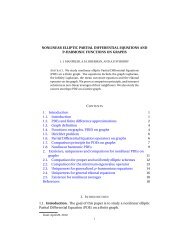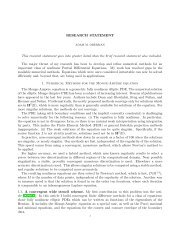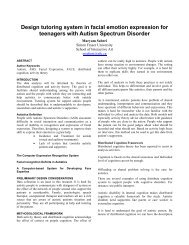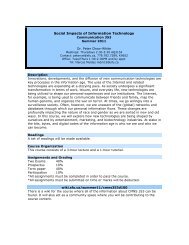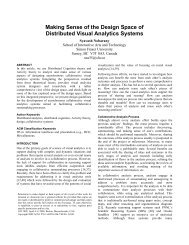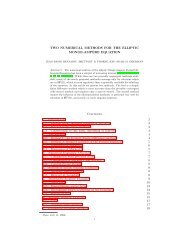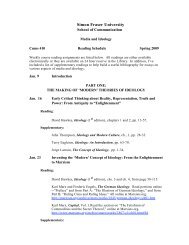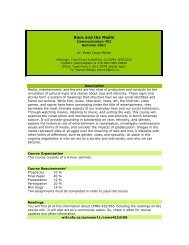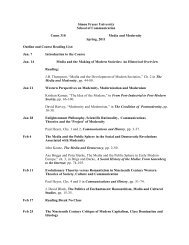Boyd Convex Optimization book - SFU Wiki
Boyd Convex Optimization book - SFU Wiki
Boyd Convex Optimization book - SFU Wiki
Create successful ePaper yourself
Turn your PDF publications into a flip-book with our unique Google optimized e-Paper software.
324 6 Approximation and fitting<br />
Here we use Lagrange duality to evaluate e wc . The worst-case error e wc (x) is the<br />
squareroot of the optimal value of the (nonconvex) quadratic optimization problem<br />
maximize ‖P (x)u + q(x)‖ 2 2<br />
subject to u T u ≤ 1,<br />
with u as variable. The Lagrange dual of this problem can be expressed as the<br />
SDP<br />
minimize t<br />
⎡<br />
+ λ<br />
⎤<br />
I P (x) q(x)<br />
subject to ⎣ P (x) T λI 0 ⎦ (6.15)<br />
≽ 0<br />
q(x) T 0 t<br />
with variables t, λ ∈ R. Moreover, as mentioned in §5.2 and §B.1 (and proved<br />
in §B.4), strong duality holds for this pair of primal and dual problems. In other<br />
words, for fixed x, we can compute e wc (x) 2 by solving the SDP (6.15) with variables<br />
t and λ. Optimizing jointly over t, λ, and x is equivalent to minimizing e wc (x) 2 .<br />
We conclude that the robust least-squares problem is equivalent to the SDP (6.15)<br />
with x, λ, t as variables.<br />
Example 6.6 Comparison of worst-case robust, Tikhonov regularized, and nominal<br />
least-squares solutions. We consider an instance of the robust approximation problem<br />
minimize sup ‖u‖2 ≤1 ‖(Ā + u1A1 + u2A2)x − b‖2, (6.16)<br />
with dimensions m = 50, n = 20. The matrix Ā has norm 10, and the two matrices<br />
A 1 and A 2 have norm 1, so the variation in the matrix A is, roughly speaking, around<br />
10%. The uncertainty parameters u 1 and u 2 lie in the unit disk in R 2 .<br />
We compute the optimal solution of the robust least-squares problem (6.16) x rls , as<br />
well as the solution of the nominal least-squares problem x ls (i.e., assuming u = 0),<br />
and also the Tikhonov regularized solution x tik , with δ = 1.<br />
To illustrate the sensitivity of each of these approximate solutions to the parameter<br />
u, we generate 10 5 parameter vectors, uniformly distributed on the unit disk, and<br />
evaluate the residual<br />
‖(A 0 + u 1A 1 + u 2A 2)x − b‖ 2<br />
for each parameter value. The distributions of the residuals are shown in figure 6.16.<br />
We can make several observations. First, the residuals of the nominal least-squares<br />
solution are widely spread, from a smallest value around 0.52 to a largest value<br />
around 4.9. In particular, the least-squares solution is very sensitive to parameter<br />
variation. In contrast, both the robust least-squares and Tikhonov regularized solutions<br />
exhibit far smaller variation in residual as the uncertainty parameter varies<br />
over the unit disk. The robust least-squares solution, for example, achieves a residual<br />
between 2.0 and 2.6 for all parameters in the unit disk.<br />
6.5 Function fitting and interpolation<br />
In function fitting problems, we select a member of a finite-dimensional subspace<br />
of functions that best fits some given data or requirements. For simplicity we



